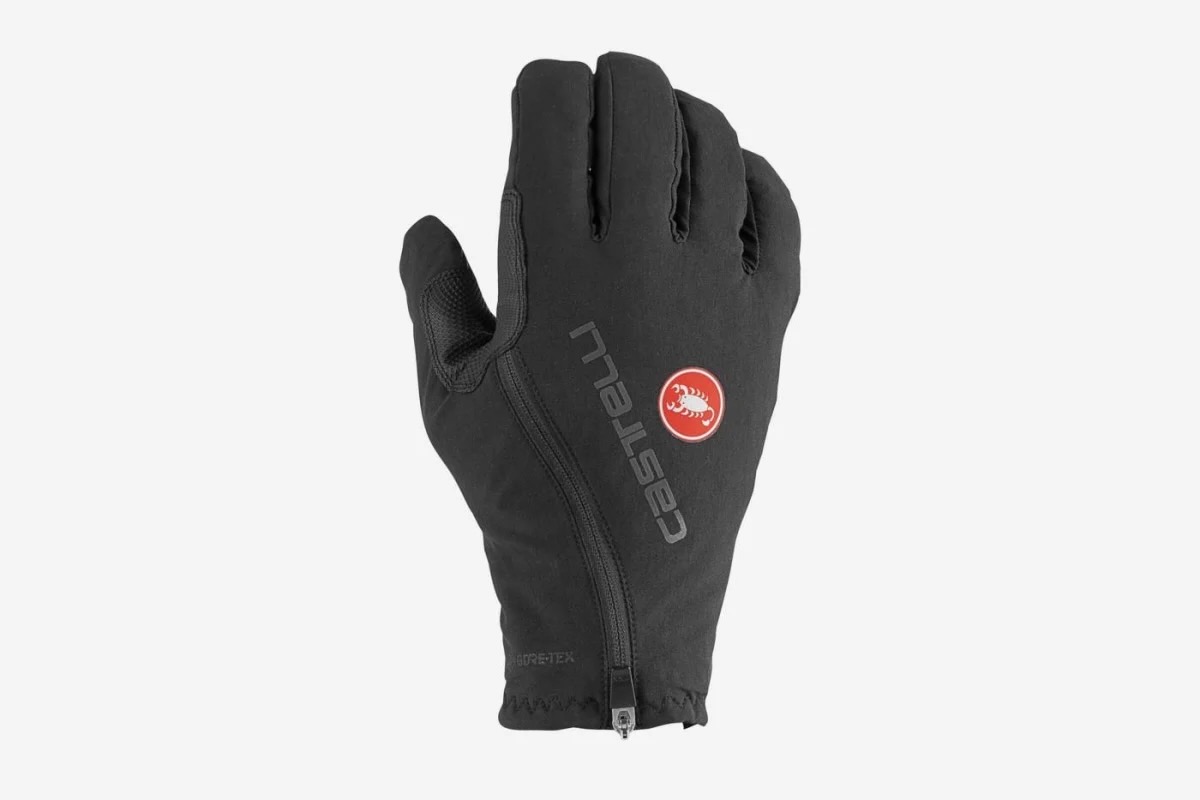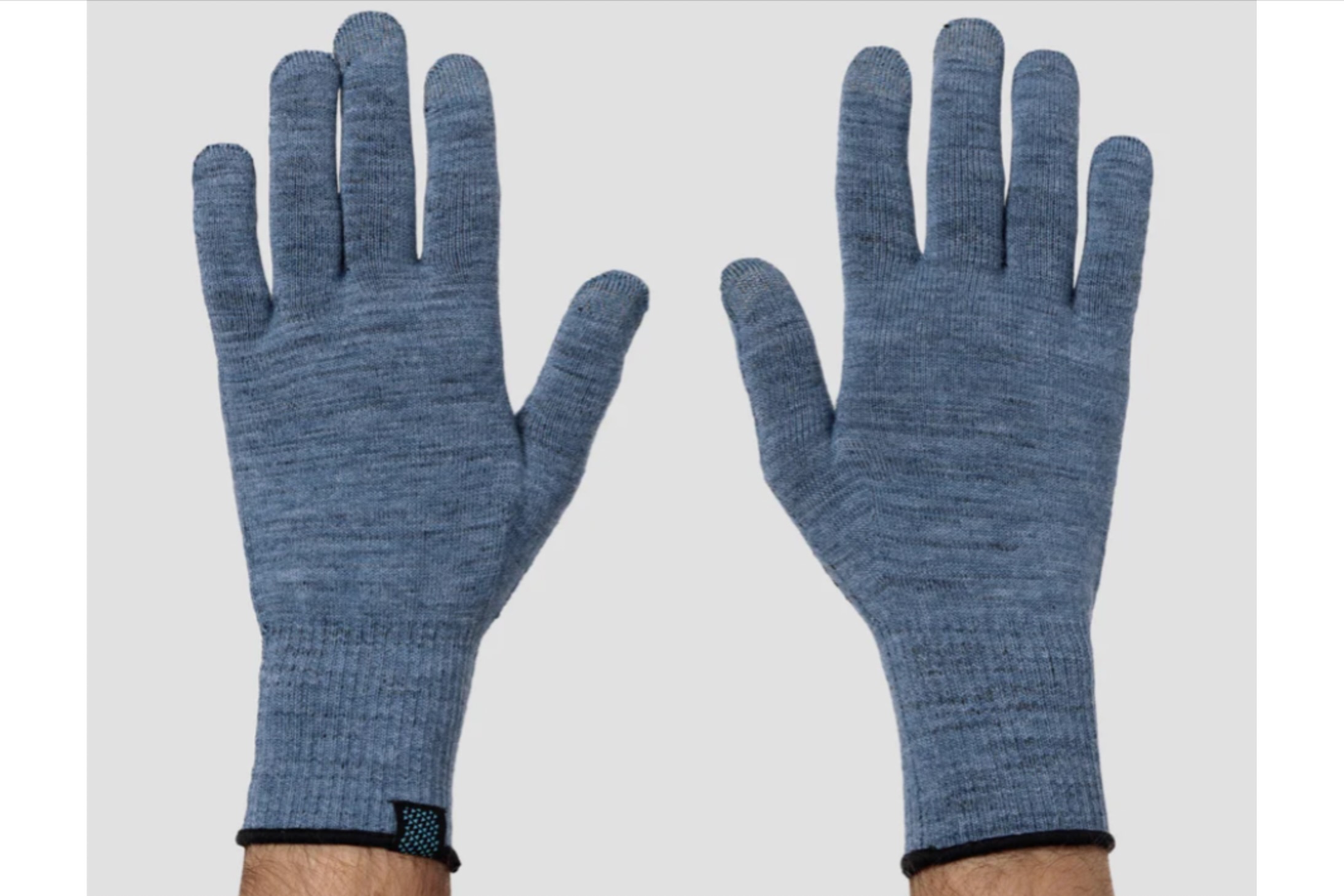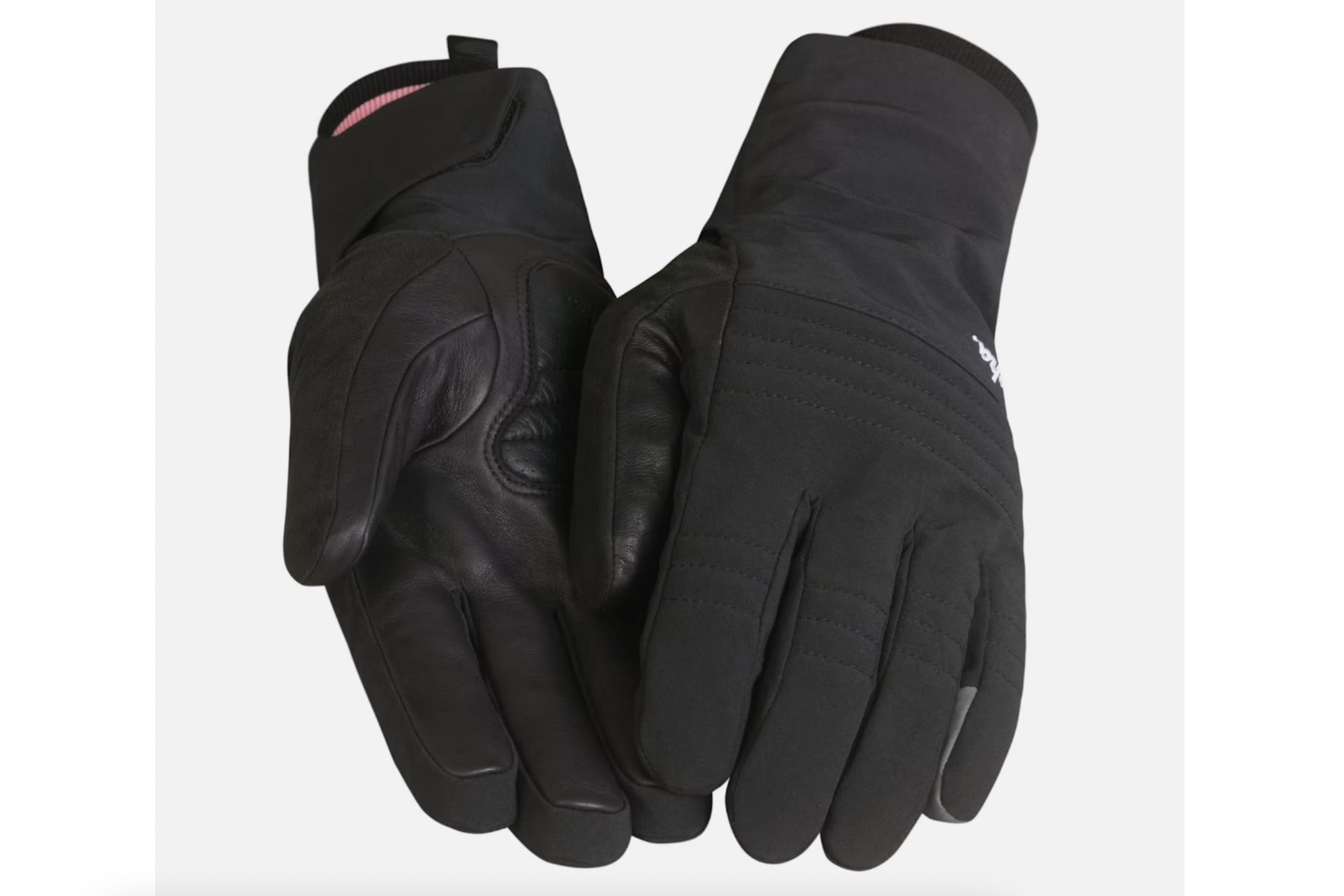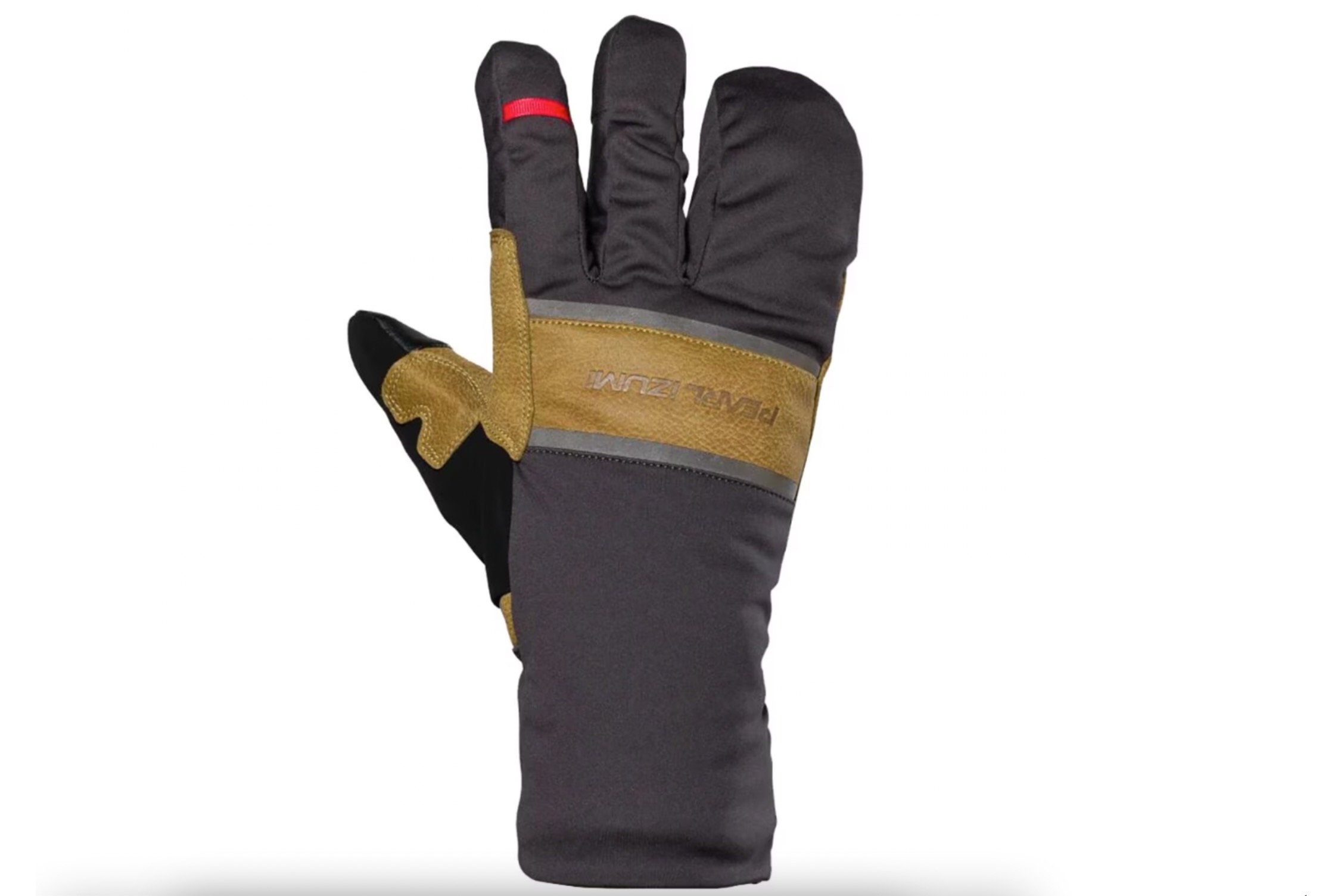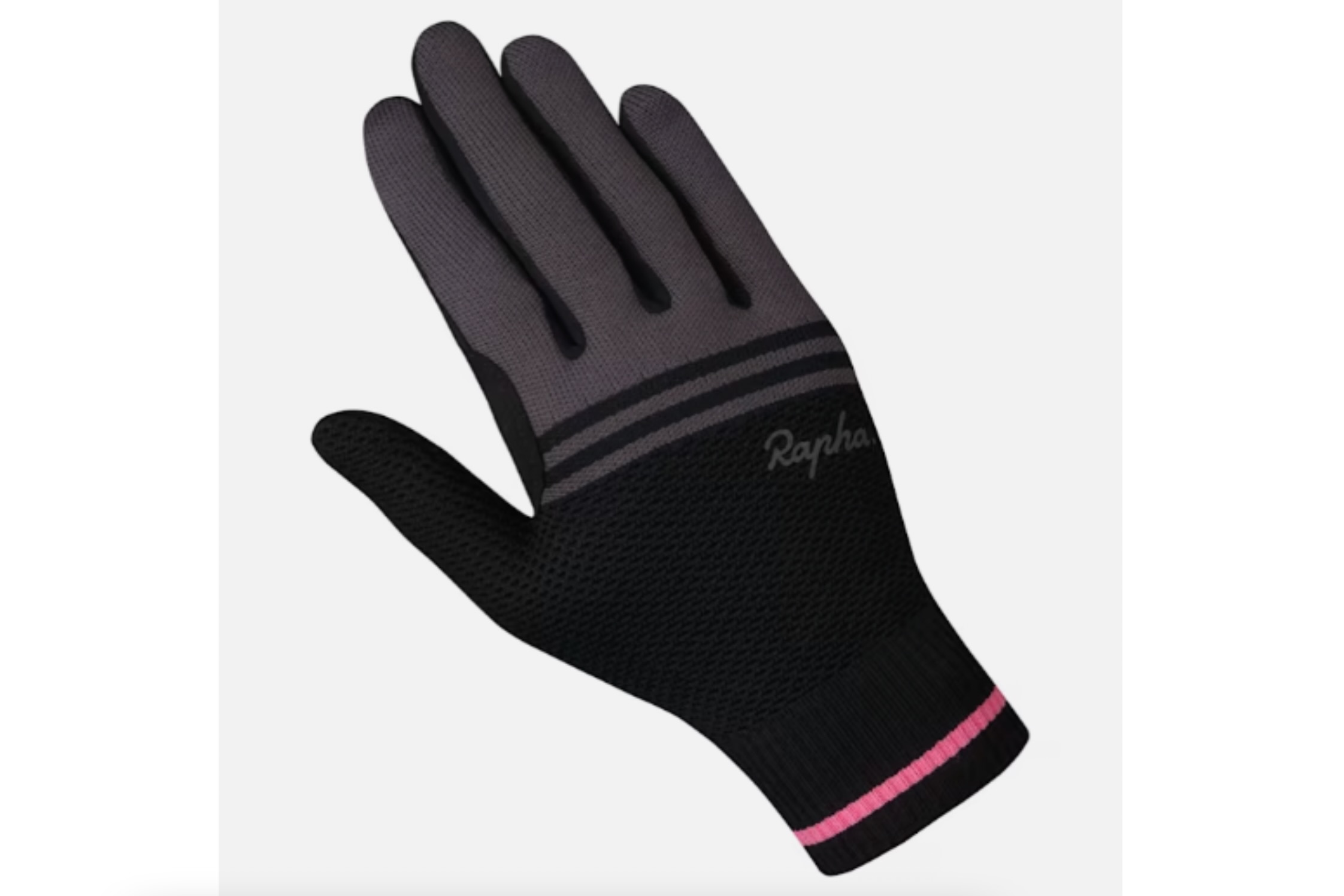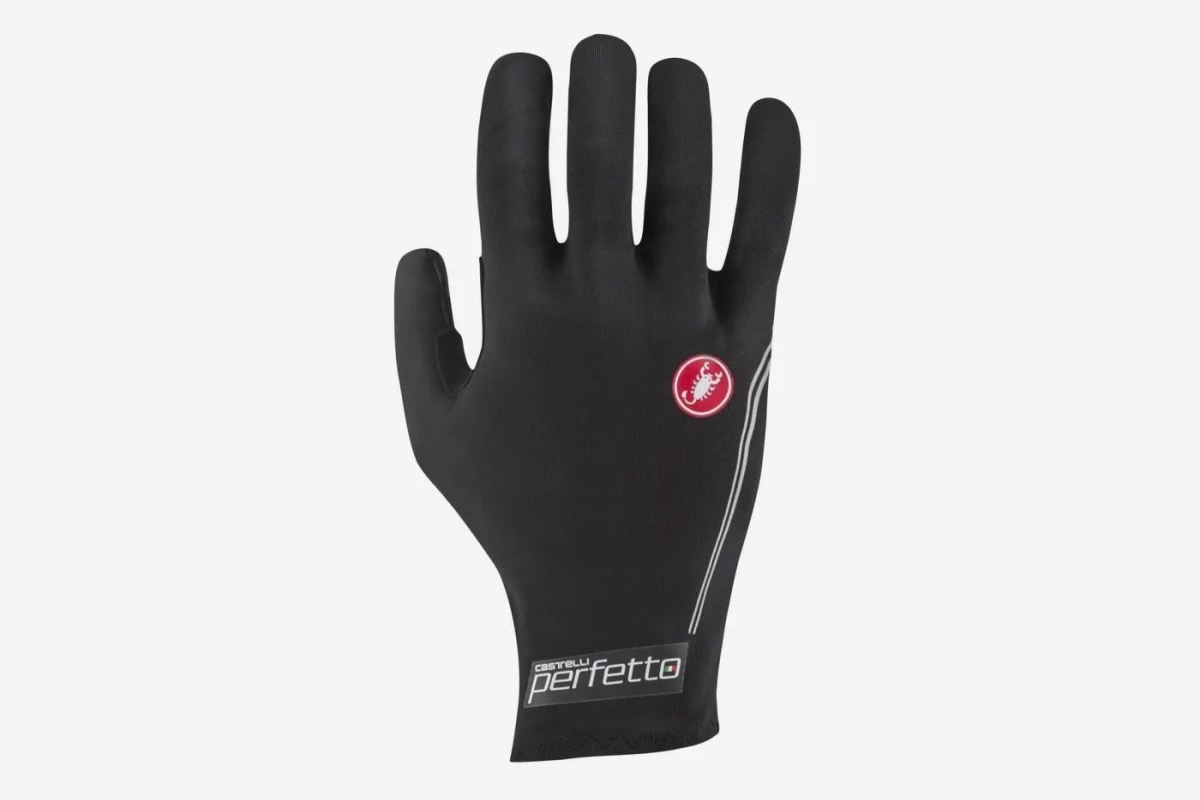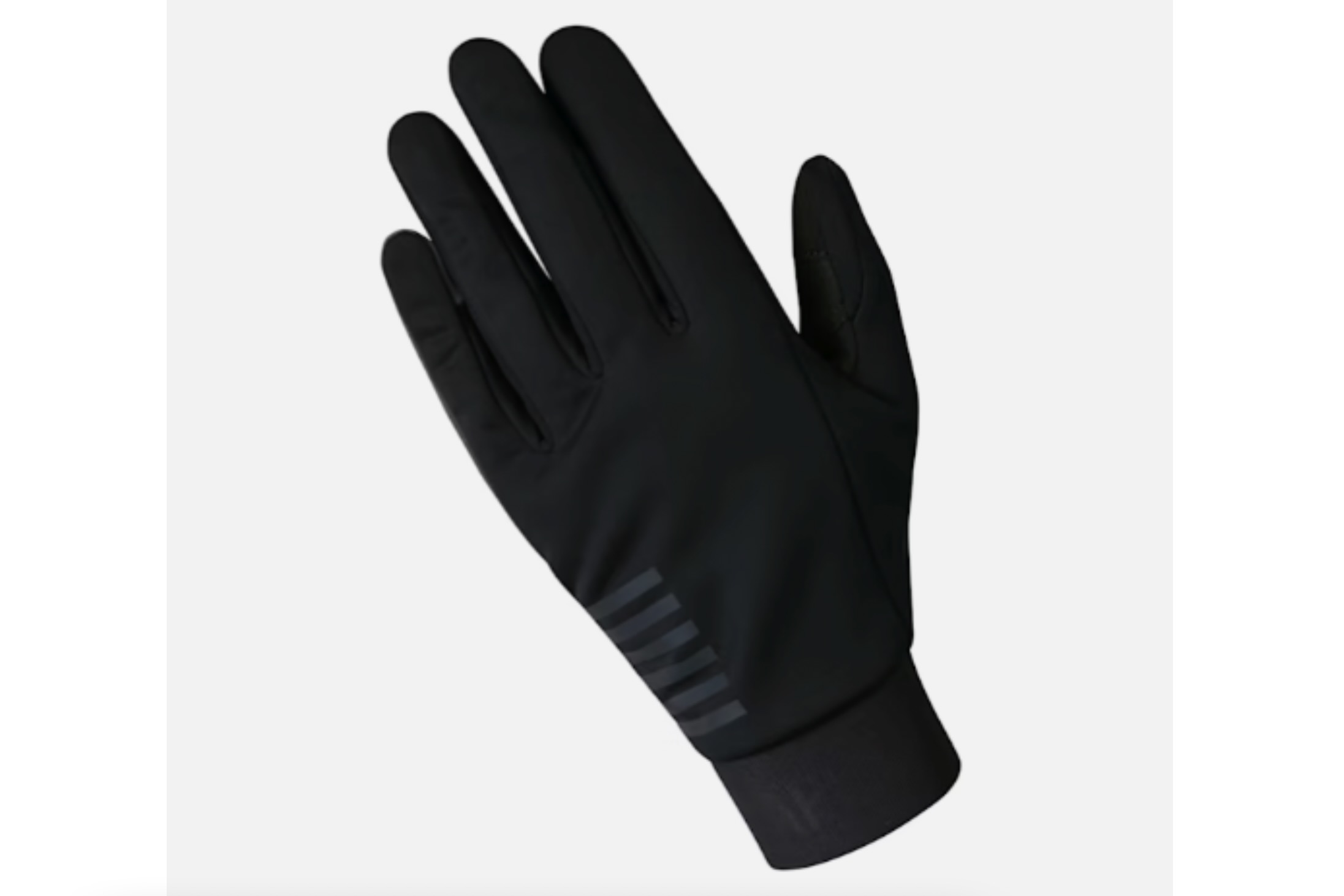When the temperatures drop, or the weather is foul, the right pair of winter cycling gloves are an essential piece of riding kit to keep your hands warm and comfortable. Thankfully, there is an enormous variety of options on the market to suit needs and preferences that vary as wildly as the fall, winter, and spring weather they are designed for.
Gloves for winter cycling vary dramatically in material, thickness, padding, and complexity of design. Depending on the climate, riding intensity and style, and sensitivity to cold, it can be challenging to find one pair of gloves that can protect the hands well on every ride throughout the colder months. Fortunately, there are models made to suit every temperature range, weather condition, and specific need. In fact, for something as simple as a glove, the amount of variety on the market is incredible.
To help navigate the choices, review author Bennett Shane spent months testing a diverse selection of 15 winter cycling gloves in a wide range of temperatures and weather conditions. From chilly autumn morning starts to drizzly and cold mountaintop summits, each pair was put through its paces to see how they perform in the real world and, most importantly, how they compare to each other.
Whether you need something thin and lightweight for riding in mild conditions, something insulated and waterproof for frigid training rides, or anything in between, our top recommendations are listed below.
Editor’s Note: This guide was relocated from our sister site, Bikerumor.com, to GearJunkie on August 21, 2024, in anticipation of the cool fall riding season. We also added information to our Price & Value section to discuss budget-related considerations for the products we tested.
The Best Winter Cycling Gloves of 2024
Castelli Espresso GT Glove
- Materials: Gore-Tex liner, Primaloft Gold insulation
- Waterproof: Yes
- Colors: Black
- Available Sizes: XS – XXL
- Works With Touchscreens: No
- Nose Wipe: No
Pros
- Luxurious Interior
- Balanced performance
- Easy in/out
- Excellent fit
Cons
- More expensive
- No nose wipe or touchscreen compatibility
Showers Pass Crosspoint Knit Waterproof Gloves
- Material: Knit exterior, waterproof-breathable Artex membrane, Coolmax moisture-wicking antibacterial knit lining
- Waterproof: Yes
- Colors: Black, Ice Blue, Neon Green, Safety Orange
- Available Sizes: S – XL
- Works With Touchscreen: No
- Nose Wipe: Not specifically, but the whole glove is basically a nose wipe
Pros
- Comfortable
- Light
- Great for rain
- Excellent grip
- Affordable
Cons
- Knit exterior can take on water over time
Ornot Merino Gloves
- Material: 52% Nylon, 20% Merino, 20% Recycled Polyester, 7% Lycra, 1% Silver Ag
- Waterproof: No
- Colors: Bluebird, Charcoal
- Available Sizes: S – XL
- Works With Touchscreens: Yes
- Nose Wipe: Not technically, but the whole glove is basically a nose wipe
Pros
- Excellent fit
- Grippy
- Soft, not itchy
- Smartphone-friendly fingers and thumb
- Affordable
Cons
- Not for wet conditions
- Don't completely block wind
Rapha Deep Winter Gloves
- Material: Windproof nylon outer, breathable OutDry membrane; PrimaLoft insulation; Synthetic brushed suede
- Waterproof: Yes
- Colors: Black
- Available Sizes: XS – XL
- Works With Touchscreens: No
- Nose Wipe: Yes
Pros
- Comfortable
- Ready for the harshest days of winter
- Built to last
- Great interface with jacket cuffs to seal out the elements
- Nose wipes on both thumbs
Cons
- Can get clammy in warmer conditions
- Expensive
Pearl Izumi AmFIB Lobster Evo
- Material: AmFIB softshell fabric, Ax Suede Laredo palm, Primaloft Gold insulation
- Waterproof: No, highly water-resistant
- Colors: Black, Phantom/Olive
- Available Sizes: S – XXL
- Works With Touchscreen: Yes
- Nose Wipe: Yes
Pros
- Impenetrable cold weather protection
- Excellent grip
- Built to last
- Affordable for what they are
Cons
- Dexterity is quite limited
- Only for use in cold conditions
Sportful No Rain Gloves
- Material: Back: 84% polyamide 16% elastane, Palm: 60% polyamide 40% polyurethane
- Waterproof: No, highly water resistant
- Colors: Black
- Available Sizes: XS – XXL
- Works With Touchscreens: No
- Nose Wipe: No
Pros
- Supremely comfortable
- Work well in temperate winter conditions
- Excellent grip on bars and hoods
Cons
- Not completely waterproof
Rapha Merino Gloves
- Material: Back: 38% merino wool, 62% nylon, Palm: polyester
- Waterproof: No
- Colors: Black/Carbon Grey, Dark Navy/Teal
- Available Sizes: XS – XL
- Works With Touchscreen: Yes
- Nose Wipe: Not technically, but the whole glove is basically a nose wipe
Pros
- Excellent fit
- Grippy
- Nice breathability
- Not itchy
- Smartphone-friendly fingers and thumb
Cons
- Not for nasty conditions
- Comparable options available for less
Other Cycling Gloves To Keep Your Hands Comfortable
- Material: Back: 85% Polyamide 15% Elastane Palm: 100% Polyamide
- Waterproof: No, highly water-resistant
- Colors: Black
- Available Sizes: XS – XL
- Works With Touchscreen: No
- Nose Wipe: No
Pros
- Comfortable
- Super warm
- Handles light rains admirably
Cons
- Sizing runs small
- Expensive
- Not great for steady rains
- Material: Gore-Tex Infinium back, synthetic palm, ThermoDrytex Plus wrist
- Waterproof: No
- Colors: Black, Cedar/Black, Beetle/Black, Blue Denim/Black, Black/Red
- Available Sizes: XS – XXL
- Works With Touchscreens: No
- Nose Wipe: Yes
Pros
- Versatile
- Light
- Warm
Cons
- Doesn't work with touchscreens
- Material: 100% polyester
- Waterproof: No
- Colors: Black
- Available sizes: XS-XXL
- Works With Touchscreens: Yes
- Nose Wipe: No
Pros
- Comfortable
- Light
- Handles light rain/spray well
- Excellent grip
Cons
- Cuff could be more substantial
- Limited temperature bandwidth
- Material: 100% polyester
- Waterproof: No
- Colors: Black
- Available sizes: XS-XL
- Works With Touchscreens: Yes
- Nose Wipe: No
Pros
- Comfortable
- Great in cold conditions
- Breathable
- Excellent grip
Cons
- Expensive
- DWR treatment only good for light rain/spray
- Material: 3-layer softshell, Ax Suede palm
- Waterproof: No, water-resistant
- Colors: Black, Screaming Yellow
- Available Sizes: S-XXL
- Works With Touchscreen: Yes
- Nose Wipe: Yes
Pros
- Comfortable
- Light
- Excellent grip
- Affordable
Cons
- Gel padding on palm may not be for everyone
- Material: Back: 100% Polyester; Palm: 60% polyamide 40% polyurethane
- Waterproof: No, water-resistant
- Colors: Black
- Available Sizes: XS – XXL
- Works With Touchscreen: Yes
- Nose Wipe: Yes
Pros
- Comfortable
- Light
- Excellent grip
- Affordable
Cons
- Not as warm as "thermal" suggests
- Material: Brushed textile, microfiber palm, foam padding
- Waterproof: No
- Colors: Black
- Available Sizes: XS – XXL
- Works With Touchscreens: Yes
- Nose Wipe: No
Pros
- Light
- Great dexterity
- Durable
- Works with touchscreens
Cons
- Not warm enough for proper cold conditions
- Kinda expensive
- Material: Brushed thermal fabric, synthetic leather palm
- Waterproof: No
- Colors: Black, Arctic
- Available Sizes: XS – XXL
- Works With Touchscreen: Yes
- Nose Wipe: No
Pros
- Comfortable
- Light
- Excellent grip
- Affordable
Cons
- Not all that warm
Cycling Gloves Comparison Chart
| Cycling Glove Model | MSRP | Materials | Waterproof? | Best For | Works with Touchscreens? |
|---|---|---|---|---|---|
| Castelli Espresso GT Glove | $130 | Gore-Tex liner, PrimaLoft Gold insulation | Yes | Cold, Wet | No |
| Showers Pass Crosspoint Knit Waterproof | $47 | Knit exterior, Artex membrane, Coolmax lining | Yes | Cool, Wet | No |
| Ornot Merino Gloves | $45 | 52% Nylon, 20% Merino, 20% Recycled Polyester, 7% Lycra, 1% Silver Ag | No | Cool | Yes |
| Rapha Deep Winter Gloves | $190 | Nylon outer, Outdry membrane, PrimaLoft insulation | Yes | Cold, Very Cold, Wet | No |
| Pearl Izumi AmFIB Lobster Evo | $95 | AmFIB softshell fabric, Ax Suede palm, PrimaLoft Gold | No, highly water-resistant | Extreme Cold | Yes |
| Sportful No Rain Gloves | $60 | No Rain fabric: 84% polyamide 16% elastane | No, highly water-resistant | Cool, Wet | Yes |
| Rapha Merino Gloves | $75 | Back: 38% merino wool, 62% nylon, Palm: polyester | No | Cool | Yes |
| Assos Ultraz Winter Gloves | $135 | Back: 85% Polyamide/15% Elastane, Palm: 100% Polyamide | No, water-resistant | Cold | No |
| Sportful WS Essential 2 Gloves | $70 | Gore-Tex Infinium, synthetic palm, ThermoDrytex Plus wrist | No, water-resistant | Cool | Yes |
| Castelli Perfetto Light Glove | $70 | 100% Polyester | No | Cool | Yes |
| Rapha Pro Team Winter Gloves | $110 | 100% Polyester | No | Cool, Cold | Yes |
| Pearl Izumi Cyclone Gel Gloves | $45 | 3-layer softshell, Ax Suede palm | No | Cool | Yes |
| Sportful Giara Thermal Gloves | $50 | 100% Polyester back, 60% PA/40% PU palm | No | Cool | Yes |
| Assos Spring Fall Gloves Evo | $80 | Brushed textile, microfiber palm, foam padding | No, water-resistant | Cool | Yes |
| Pearl Izumi Thermal Gloves | $30 | Brushed thermal fabric, synthetic leather palm | No | Cool | Yes |
Why You Should Trust Us
At GearJunkie, we truly enjoy riding outside, and we don’t stop when the days get shorter, the temperature drops, and the weather is less than ideal. Instead, we know that having the right gear can make riding through the fall, winter, and spring just as enjoyable as the warmer months of the year. In addition to gloves, other gear like bib tights, jackets, and cycling shoe covers can help you stay comfortable and elevate your ride experience while keeping you off the indoor trainer.
For our winter cycling gloves buyer’s guide, we tapped review author Bennett Shane to test all of the gloves in this review. Bennett has been cycling for over 20 years, and while his racing days are behind him, he still rides obsessively for fitness, fun, and, of course, testing gear.
Bennett is a year-round outdoor road cyclist who lives in Portland, Ore., where he experiences every weather condition imaginable and knows the importance of having the appropriate apparel and accessories to enhance his comfort and enjoyment on the bike when it’s cold and wet, which it often is.
Bennett also spent many years working for numerous prominent brands in the cycling industry, which has given him a unique insight into materials, designs, constructions, and technologies across the spectrum of cycling products. His depth of knowledge is uncanny.
His cycling, product testing, and industry experience combine to give him a keen ability to analyze the often subtle performance differences in the products he tests. In addition to cycling gloves, Bennet has contributed his experience and knowledge to other reviews, including the best road bike shoes, protective road bike helmets, cycling bib shorts, and road bike tires.
How We Tested Winter Cycling Gloves
After researching the best winter cycling gloves on the market, we rounded up a diverse selection of 15 models for side-by-side testing. Bennett closely examined the fit, materials, construction, design, and features before testing them for months in the highly variable fall weather of the Pacific Northwest. From crisp morning and evening rides to freezing cold and wet rides through the mountains, each pair was put through its paces in a range of temperatures and weather conditions.
While testing, Bennett carefully considered fit, comfort, bar feel, and warmth, along with wind and weather protection. Noses were wiped, touchscreens were touched, and wrist cuffs were analyzed for how well they interface with the best cycling jackets. When testing concluded, we chose our favorites overall and those that stood out for specific reasons compared to the rest.
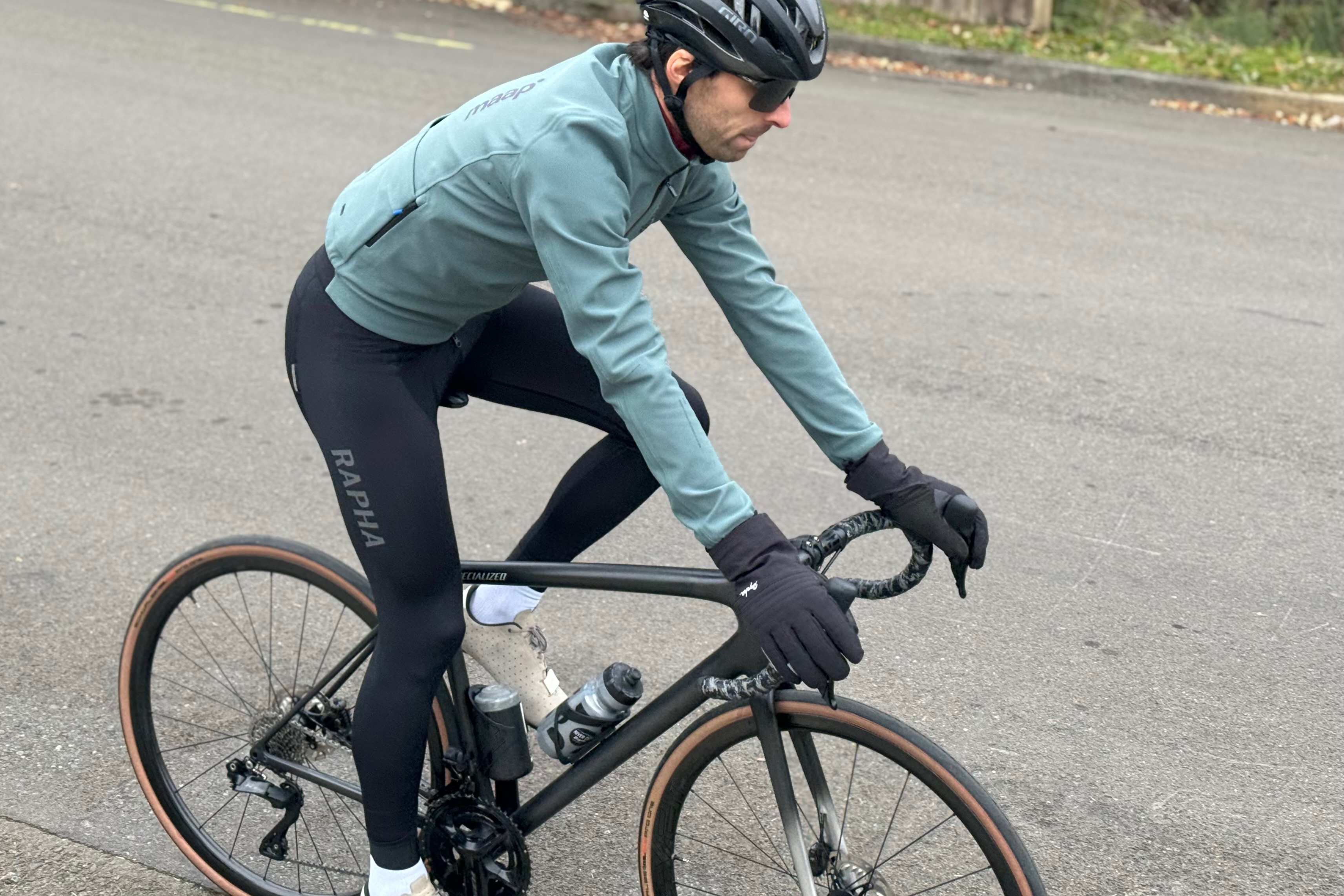
Buying Advice: How to Choose Winter Cycling Gloves
The right pair of gloves is an essential part of the cycling kit, especially in cool weather. With so many different winter cycling gloves on the market, finding the right pair to suit your needs perfectly can be a daunting task. One of the most important things to consider is the conditions you expect to encounter most often, as that will dictate what level of weather protection or insulation you will need. An individual’s sensitivity to cold and/or typical riding intensity are also important factors that may influence this decision.
Types of Winter Cycling Gloves
With so much variability in the weather and temperatures where cyclists live or choose to ride in, there are just as many different styles of winter cycling gloves to match. Of course, depending on the climate where you live, what you consider to be cold temperatures or miserable weather may vary as well. Sometimes, a single model may have you covered, although, for some people, it may be necessary to invest in more than one pair to cover all your needs.

Cool Weather
Let’s face it: the vast majority of cyclists are heading out for fall, winter, and spring rides when the temperatures are cool but not downright frigid. For cool but relatively mild temperatures in the 40-degree to 55-degree F range, there are lots of options to take the edge off the wind and provide a tiny bit of insulation to keep your digits warm while providing better dexterity, bar feel, and breathability than heavier, bulkier models. If you’re used to riding gloveless or in summer-weight gloves, it can be shocking just how much warmer a pair of cool-weather gloves can be.
Generally speaking, cool-weather gloves are thinner and lighter than beefier cold-weather options and typically consist of a light wind-blocking shell or possibly even have a knit construction. Some cool-weather gloves also feature water-resistant or waterproof membranes to keep rain or road spray from soaking your hands.
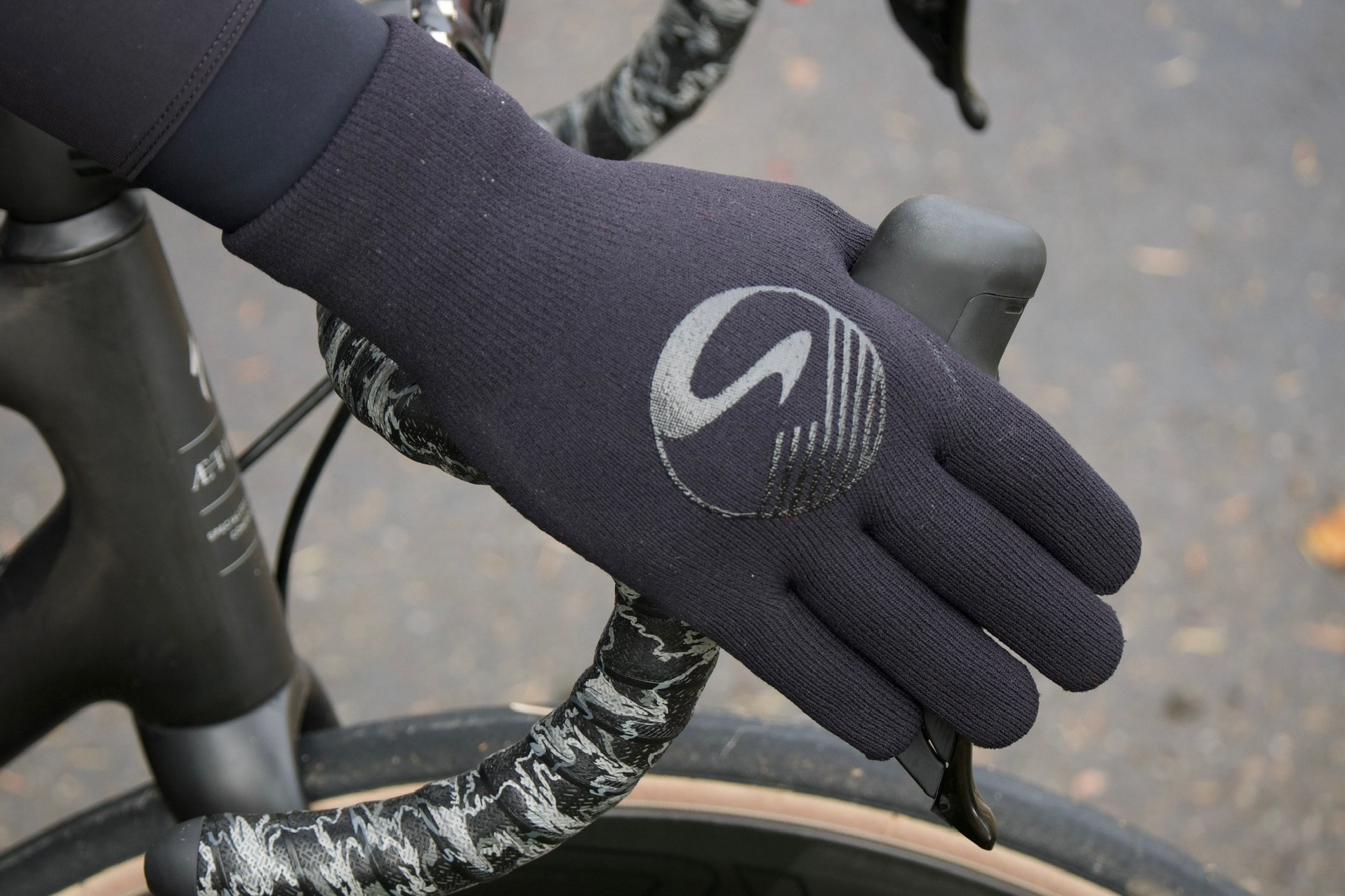
Spring and fall rides and early mornings or brisk evenings are typically when these gloves are the most effective. Not surprisingly, gloves with Spring Fall or Light in the name usually fall into this category, like the Assos Spring Fall Gloves Evo and the Castelli Perfetto Light. Similarly, gloves with knit constructions like the Ornot Merino, Rapha Merino, and the Shower Pass Crosspoint Knit Waterproof Gloves are light, dexterous, tactile, and very comfortable.

Cold Weather
When temperatures are hovering just above or just below freezing, it’s officially cold. For these conditions, gloves with insulation and wind-blocking materials are needed to fight the chill of the wind and maintain warmth around your hands. These gloves typically work well in the 20-40-degree range and some will also be waterproof or highly water resistant to protect against rain showers and road spray.
In general, cold weather gloves work well within their temperature range, though they can quickly become too warm if/when used in temperatures above that. While they typically try to balance warmth with breathability, the addition of insulation can sometimes make them trap moisture more than thinner cool weather models.
PrimaLoft is a commonly used type of insulation that is often found in cold-weather cycling gloves. The Castelli Espresso GT Glove is one such example that includes PrimaLoft Gold insulation along with a GORE-TEX membrane that aims to keep you both warm and dry in properly cold winter conditions.
Likewise, the Assos Ultraz Winter Gloves are warm enough for temperatures around the freezing mark without being bulky. They don’t pack the same level of weather protection as the aforementioned Castelli Espresso GT, but they work very well in the cold, dry conditions they’re designed for.

Extreme Cold
When it’s really cold and you absolutely must ride outside, having gloves that can keep your hands from freezing is absolutely critical for comfort and control. Gloves designed for extreme cold include insulation, wind- and weather-blocking material and often have designs to enhance warmth or seal out the elements.
Though we didn’t test any two-piece gloves, some winter gloves will have a liner and outer glove that are separate pieces so you can layer up for extra protection or adjust as needed. Additionally, a separate, thin-liner glove can often be used with bulkier outer gloves to increase their warmth.
When it gets really cold, the Pearl Izumi AmFIB Lobster Evo is one of the gloves we’re happy to be wearing. With Primaloft insulation, a windproof and water-resistant AmFIB membrane, and the lobster-style design, these gloves keep your hands and fingers happy on bitterly cold days. S
Similarly, the Rapha Deep Winter Gloves are made to stand up to harsh conditions. With a wind and weatherproof Outdry membrane, Primaloft insulation, and a double cuff to seal around your jacket sleeve, these gloves keep both the cold and water at bay to keep you spinning when everyone is still at home.
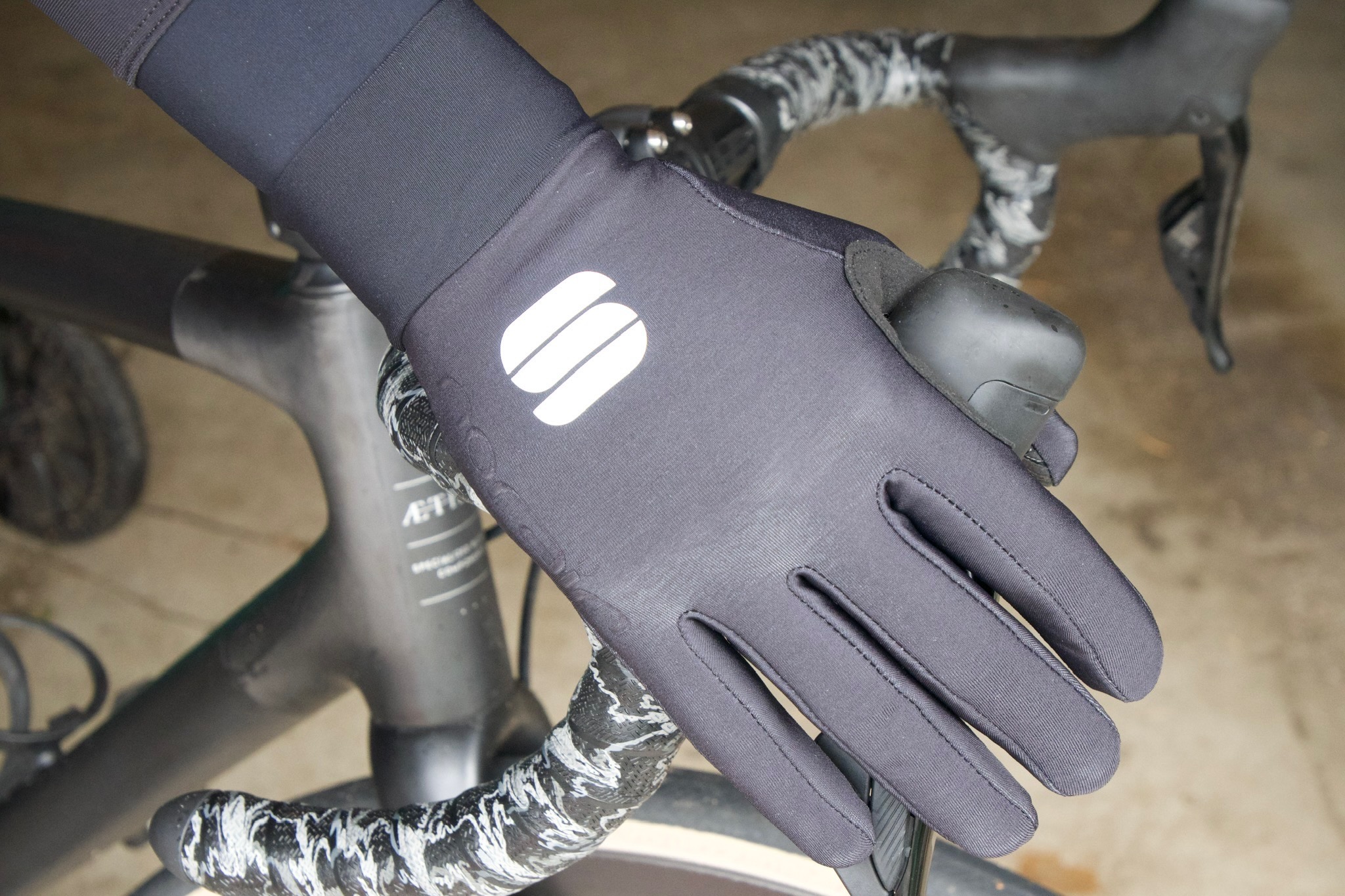
Wet Weather
While most of us try to avoid riding in the rain, some people seem to revel in it or simply can’t avoid it if they want to ride outside. For most riders, however, rain is usually in the form of passing showers on unsettled weather days and the resulting road spray from wet roads. Either way, when you factor in cold temperatures with wet conditions, you’ve got a recipe for some very cold hands.
Keeping your hands dry will significantly increase your comfort and your hands’ ability to stay warm. There are many gloves designed to handle wet weather on the market, and they span across all of the above-mentioned temperature ranges. How brands approach this varies, however, with different materials and levels of water protection.
Some gloves are highly water-resistant but not fully waterproof and aim to balance breathability with enough weather protection for most wet situations short of riding in full-on rainstorms. These gloves will often use a wind-blocking and highly water-resistant membrane, like GORE-TEX Infinium, in their construction, like the Sportful Essential WS 2 gloves. Similarly, the Sportful No Rain Gloves use the brand’s No Rain water-repellent fabric to effectively defend against light to moderate rain and road spray.
Some gloves go all-in on wet weather protection with fully waterproof membranes to keep the water out. The Castelli Espresso GT Gloves are one such example that uses a Gore-Tex waterproof membrane to seal out water while still providing admirable breathability. Similarly, the Rapha Deep Winter Gloves employ an Outdry wind and waterproof membrane that works in roughly the same way.
Knit gloves are not typically associated with robust wet weather protection, but the Showers Pass Crosspoint Waterproof Knit Gloves turn that notion on its head. With a waterproof Artex membrane sandwiched between the knit outer and Coolmax liner, these gloves provide the comfort and fit of a knit glove with full protection from the rain.
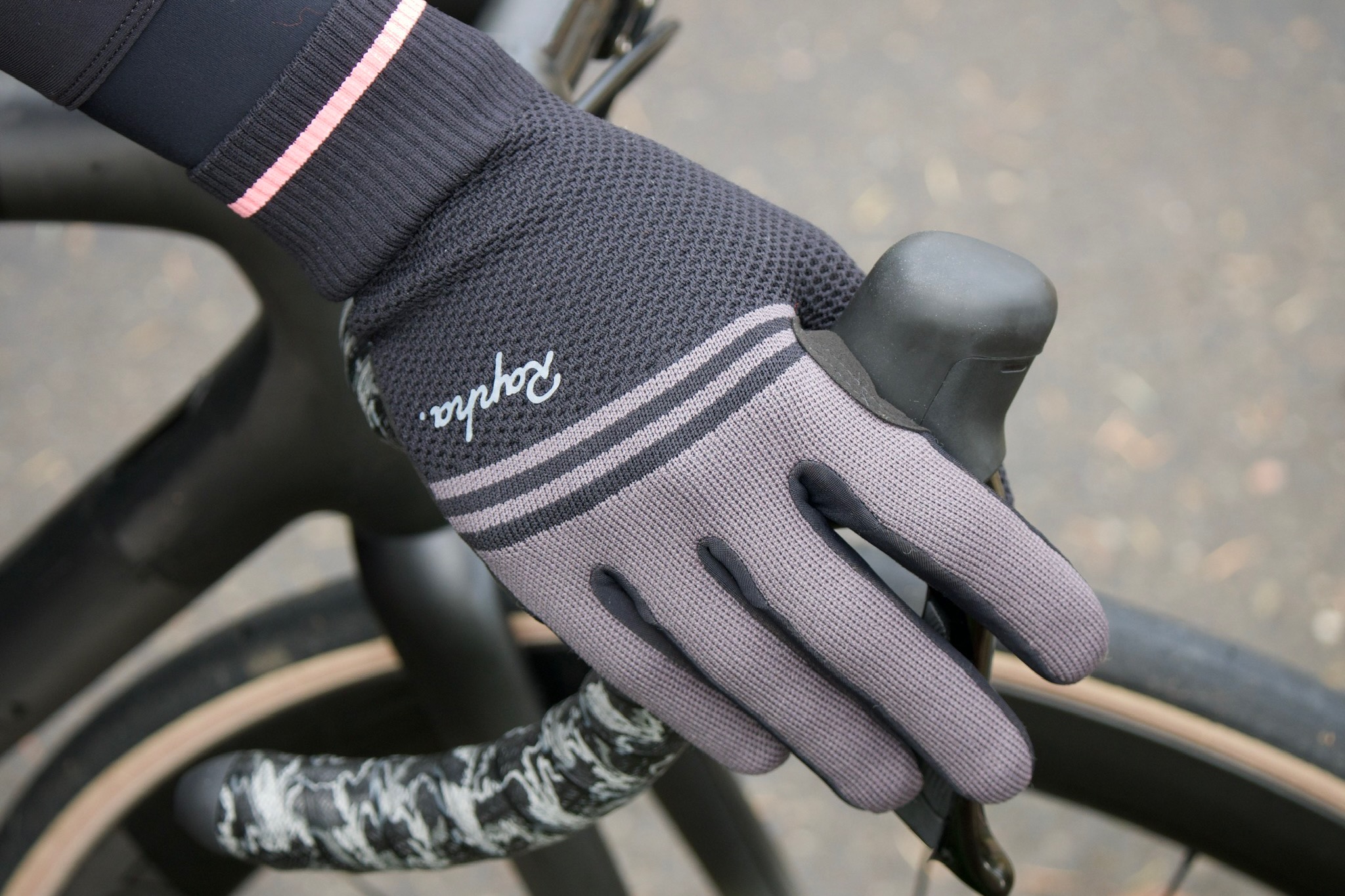
Fit
Like any other cycling apparel or accessory, getting gloves that fit well is important for comfort and performance. Gloves that fit well feel like an extension of our body and avoid being too tight and restrictive or too big and loose. Too big, and there can be excess material that can bunch and irritate the skin, or your hands can move around inside, resulting in a reduction of control.
Having too much space inside an insulated glove can also have a negative impact on its ability to maintain warmth. Too small and gloves glove can feel constricting, potentially impacting dexterity, or worse, restricting blood flow that is critical to keeping your hands warm in cool conditions. We want our gloves to fit just right.
Most of us already know our glove size, so this is typically a fairly easy step in the process. For most gloves, you’ll simply want to go with your regular summer-weight gloves size, and it should be a good fit. If you’re considering wearing a liner glove underneath a heavier glove, however, you may want to size up slightly to ensure there’s room to fit comfortably.
If you’re unsure of your size, most brands have detailed size charts that should help you figure it out with a few measurements. Of course, heading to a shop and trying gloves on is a surefire way to ensure you get the right fit.
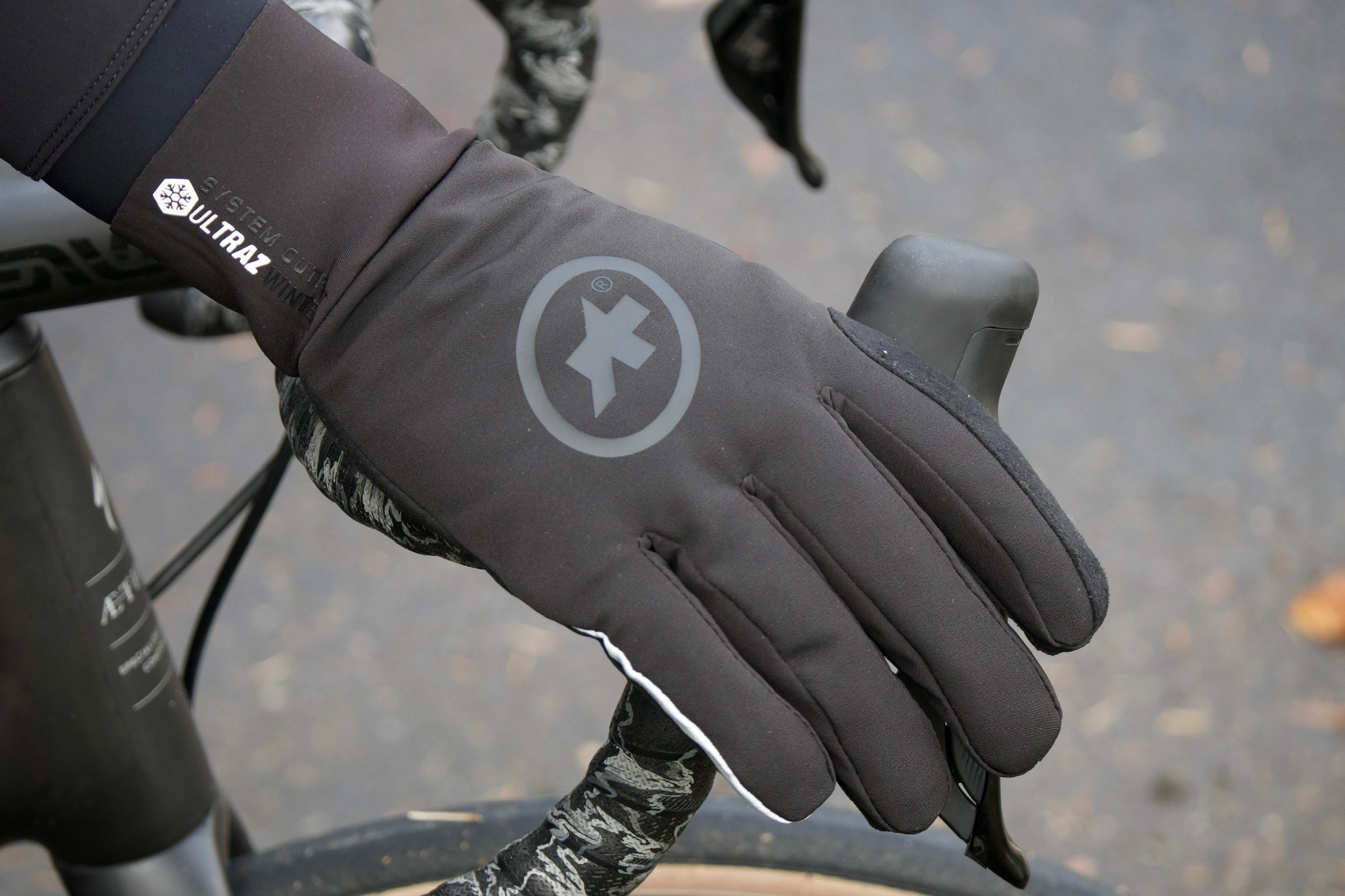
Wrist Cuffs
When wearing winter cycling gloves, it often means that we’re also wearing a cycling jacket of some kind, and the wrist cuffs of most gloves are designed to integrate well with jackets. Most gloves have relatively low-profile wrist cuffs, and many are extended slightly up the wrist so that they slide under the cuff of a jacket sleeve to provide protection for the wrist where they meet.
The wrist cuffs of the models we tested vary in design, however, with some being simple, stretchy, pull-on affairs while others may use a Velcro tab or zipper to open the cuff further to ease entry and exit.
What works best for you is often a matter of personal preference. A design that we really liked is the Castelli Espresso GT with a back-of-hand zipper that allows the gloves to open wide and get warm hands in and out super easily. Another is the Rapha Deep Winter Gloves with their double cuff design. A sung cuff wraps around the wrist with an outer shell cuff that can be used to sandwich the cuff of the jacket sleeve between them for a great seal.
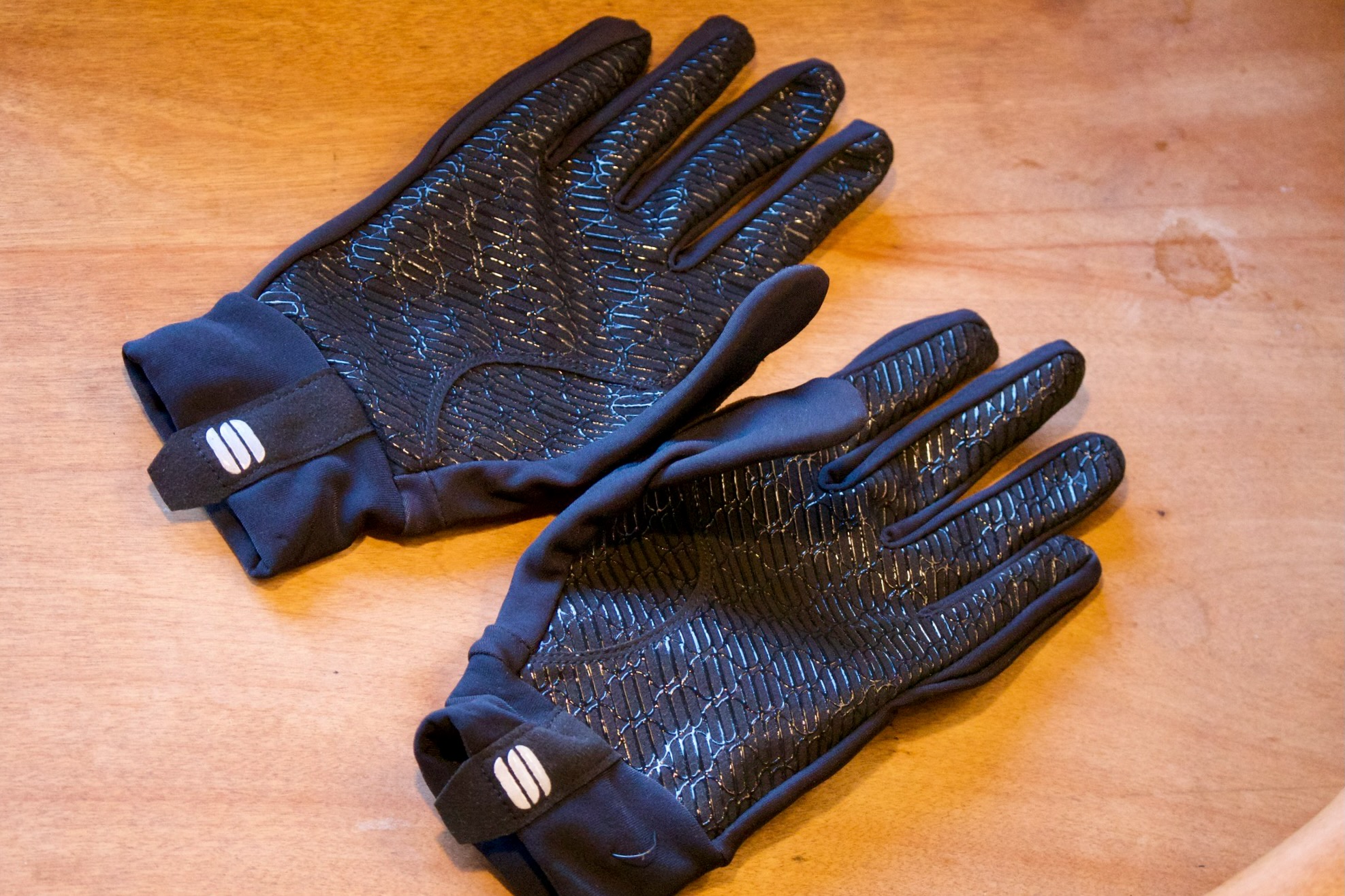
Palm
The palm of a cycling glove is important because it serves as the interface between our hands and our handlebars. Not only is this interface important for our control of the bike, but it also plays a role in our comfort. In general, we look for palms that provide excellent grip and a very direct, connected feel to the bars that is as similar as possible to the feel of not wearing gloves at all.
Good palm designs are articulated to the hand in the riding position and avoid bunching while being as thin as possible (within reason depending on the intended use) to transmit feedback and bar feel. Most palms are made from synthetic materials that mimic suede, providing comfort for the hands and a good grip on the hoods or bars, and many models also feature silicone strips or patterns to add additional grip, which may be welcome in wet conditions.
Some gloves also feature strategically placed padding with the goal of increasing comfort. Padding is a personal preference, and some riders seem to like it, while others would rather have gloves without.
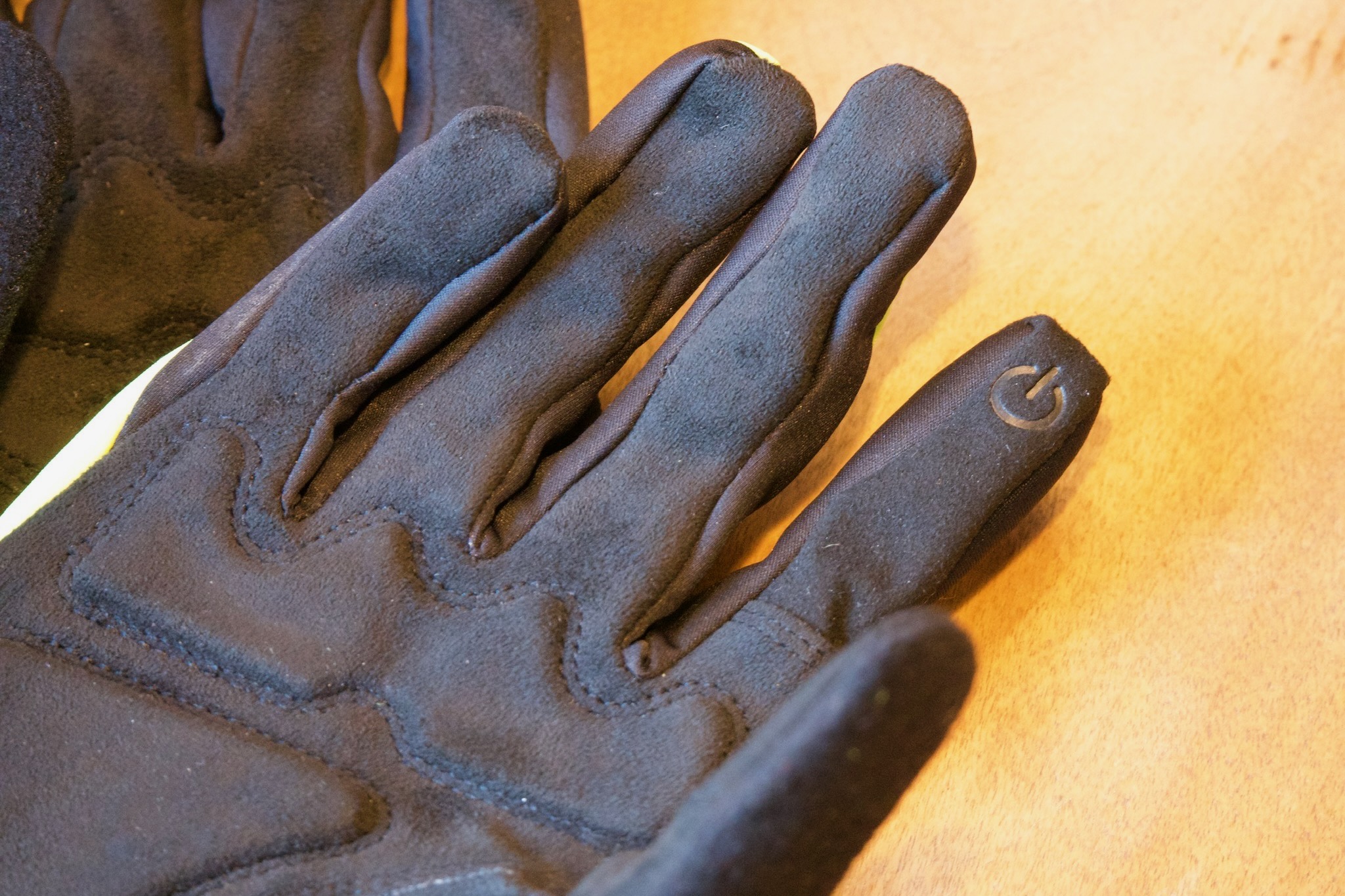
Touchscreen Compatibility
Like it or not, touchscreens have become a major part of our lives. Whether on our smartphones or our cycling computers, touchscreens are everywhere and we can’t even seem to get away from them while we ride. Whether for navigation, responding to a text, taking a scenic or riding shot, or answering work emails mid-ride, being able to use a touchscreen without taking your gloves off is pretty nice.
Many gloves, but certainly not all, are designed to work with touchscreens through the use of conductive threads or conductive materials used on the tips of the pointer finger and thumb. How well these features actually work varies slightly, but most will allow you to perform simple tasks on screens, with some performing better than others. One of the primary factors that influences the functionality is the thickness of the gloves themselves. The slimmer fitting and less bulky the fingers are, the easier it is to do things on a touchscreen, generally speaking.

Nose Wipe
When it’s cold outside, our noses are more likely to be runny and we still produce sweat when we’re putting in some effort, so a soft wipe for your nose and/or sweat is a nice feature on many models of gloves. These wipes are typically on the thumb of the gloves and are made from a soft, absorbent material. While a nose wipe isn’t a make-or-break feature, it is something that we’ve come to appreciate and prefer to have for riding in cool weather if possible.
Price & Value
In the grand scheme of things, cycling gloves are relatively affordable compared to many of the other parts, apparel, and accessories we buy for this sport. Given the fact that riding in the cold, wet, or both can be miserable without a good pair of winter cycling gloves, we feel that it is generally money well spent. Like anything else, there are lots of options and you can spend a little or a lot to keep your hands warm and dry.
Budget
Thankfully, there are some great budget-friendly cycling gloves on the market that cost $50 or less. While these gloves typically forgo fancy materials, they get the job done at a fraction of the price of the higher-end competition. Take, for example, the Showers Pass Crosspoint Waterproof Knit Gloves ($47).
These affordable gloves are not only super comfortable, but they’re actually waterproof! If you ride in relatively mild and dry conditions, then something like the Ornot Merino ($45) or the Pearl Izumi Thermal ($30) will do the trick. Similarly, the Pearl Izumi Cyclone Gel Gloves ($45) may not have the most precise fit, but they still work great for most cool weather riding.
Mid-Tier
Moderately priced gloves in the $50 to $100 range typically are made from more advanced materials or have more specialized designs to work for more specific temperatures or conditions. The Sportful Essential WS 2 gloves ($70), for example, are made with Gore-Tex Infinium material that blocks wind, breathes well, and is highly water-resistant. These gloves will work for most of the temperature and weather conditions that most people are willing to go riding in.
On the more extreme end of the spectrum, the Pearl Izumi AmFIB Lobster Evo gloves ($95) are one of the more affordable waterproof and insulated gloves you can find. Others in this price range, like the Assos Spring Fall Evo ($80), are specifically made for cool temps and dry conditions and have an excellent fit and durable construction.
High-End
More advanced materials, designs, and constructions drive the price up, and often the gloves made for the most extreme conditions cost the most. Some of our favorite models also happen to be the most expensive, like the Castelli Espresso GT ($130) and the Rapha Deep Winter ($190) gloves, which are made with premium materials to fend off the harshest weather and coldest temperatures winter has to offer.
GORE-TEX membranes, insulation, and more complicated closure systems add up, and therefore, these gloves cost more money. That said, if you’re willing to shell out the big bucks for these gloves, we doubt you’ll be disappointed.
Frequently Asked Questions
If you plan to ride in the fall, winter, and spring, or even brisk morning and evening rides in the summer, the answer is yes. As soon as you encounter temperatures below around 55 degrees F, a good pair of cycling gloves will help to keep you warm, dry, or both, and keep you more comfortable while you ride.
And, while you can ride in any gloves you choose, we recommend cycling-specific gloves because they are designed for the task. Cycling gloves have special cuts, materials, and features that simply make them work better for road or gravel riding than other options.
The winter cycling gloves that are best for you depends entirely on the temperature and weather conditions that you’ll be experiencing. This depends on your tolerance for cold, climate, willingness to ride in wet conditions, and ride intensity. No single glove will be the ideal glove for everyone, so its important to be realistic about your fall, winter, and spring riding and find the glove (or gloves) that are best suited to your needs.
For some people, it may be a versatile option that hits the happy middle ground of warmth and weather protection, while for others it may be multiple gloves to cover the bases for a wider range of conditions.
Whether or not you need fully waterproof gloves really depends on the conditions you expect to encounter while riding. If you intentionally go out and ride in steady rainstorms, then yes, absolutely, waterproof gloves are a necessity. If you’re like most people, however, who try to avoid that, then a water-resistant glove is often a better option that will handle the vast majority of light to moderate rains that we’re likely to encounter when the weather is unpredictable.
For many people, having multiple pairs of winter cycling gloves is necessary to cover all of the different conditions they will encounter during the fall, winter, and spring. Cool-weather gloves for shoulder season rides, cold-weather gloves for the deep of winter, and wet-weather gloves for those days you just can’t bear to ride the indoor trainer again.
Not everyone will need multiple pairs of gloves, it really just depends on the conditions that you’re willing to go outside and ride in. For many people, a versatile glove like the Showers Pass Crosspoint Waterproof Knit or the Sportful Essential WS 2 gloves will work great for 99% of the cool-to-cold weather riding they do.
Everyone’s budget is different, so there’s no right answer to how much you should spend on winter cycling gloves. The gloves you can afford are much better than none at all and better than spending more than you’re comfortably able to. But, it depends on your needs, as some of the more protective and warmer options simply cost more than lighter-weight and simpler gloves.
Even in the more niche, and typically more expensive, categories, you’ll find a wide range of prices, and even the more budget-friendly models will help you stay comfortable when you need to get outside and ride.
A good pair of cycling gloves is just one element of the cold-weather riding kit. For anyone dedicated to riding outside when the temperatures are cool or cold, and the weather is unstable, there are several other pieces of apparel or accessories you may want to consider. Full-length cycling bib tights provide full leg coverage along with wind and weather protection and insulation in some cases.
Cycling shoe covers are a great way to keep the cold, wind, and water from chilling the feet, and a good cycling jacket can do the same for the upper body. Insulating base layers and mid-layers are also great for developing a layering system to handle your specific needs for warmth. A huge range of cycling caps are offered to protect your head and ears from the elements, and face covers and/or balaclavas are helpful to protect your face as well.
Related Content
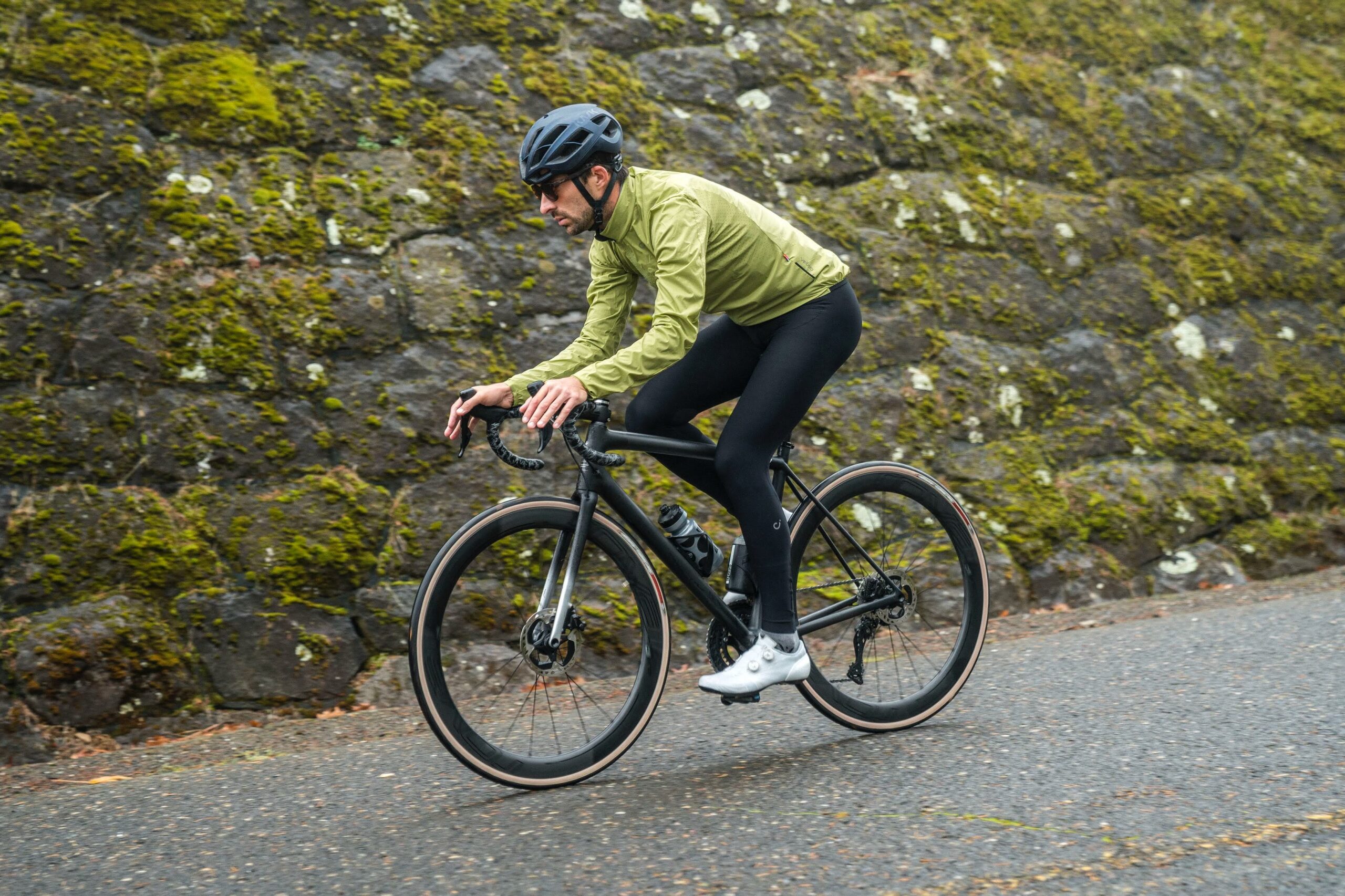
The Best Cycling Jackets of 2025
We tested 19 models from top brands, like Castelli, Gorewear, Ornot, Rapha, and more to find the best cycling jackets.

The Best Road Bike Shoes of 2024
We tested 14 of the best road bike shoes on the market to help you find the right pair for your needs and budget.

